1 of 17
Download to read offline




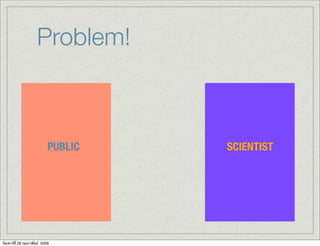
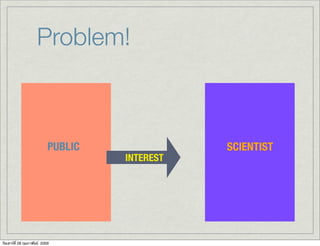
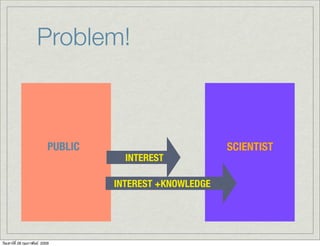
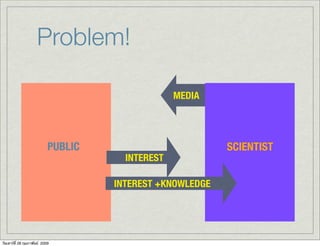
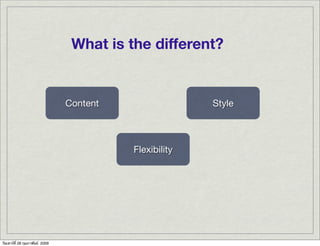
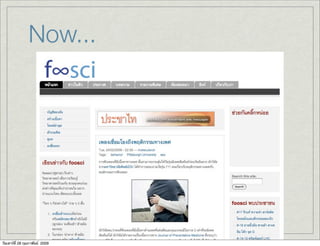

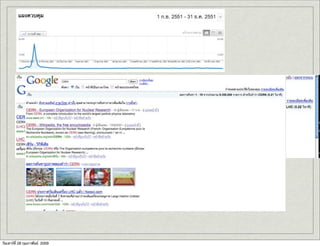
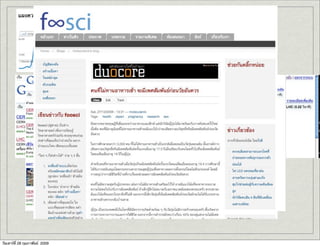
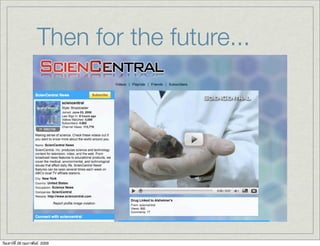
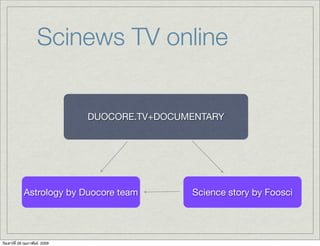
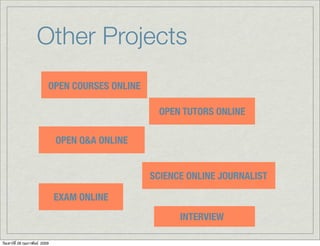

Ad
Recommended
qwest communications 020807_Non-GAAP_Measures_Reconciliation_excel
qwest communications 020807_Non-GAAP_Measures_Reconciliation_excelfinance19
?
The document summarizes financial information for Qwest Communications International Inc. for the three months and full year ended December 31, 2006 and 2005. It provides key metrics such as operating revenue, costs, segment income, EBITDA, cash flows, debt levels, and operating margins. Non-GAAP financial measures are reconciled to GAAP measures and footnotes explain how the non-GAAP measures are useful for evaluating the capital-intensive business.Presentacio SmartSebasmunoz
?
Presentaci©«n de las actividades con la PDI Smart en el aula de EI 3 a?os del Ceip Antoni Grau Minguell de Sant Quint©¬o de Mediona / BarcelonaData and personality introducing psychologic
Data and personality introducing psychologic Chakard Chalayut
?
The document discusses the application of psychological concepts and personalized messaging to enhance marketing effectiveness, resulting in a 59% increase in click-through rates and a 22% boost in conversion rates. It notes that AI algorithms will likely improve these results over time by better understanding individual personality drivers. The content references the work of Datasine and decision interfaces related to the 'IKEA effect'.The power of user psychology and behaviour
The power of user psychology and behaviourChakard Chalayut
?
Human psychology and behavior can be understood using models like the OCEAN personality model. Only a small amount of data is needed to accurately model groups, as shown by Cambridge Analytica using 0.26% of total data to model US voters. Understanding factors like pricing, scarcity, environment, competition, relationships and social proof can provide insights into human economic behavior and decision making that startups can adapt to their advantage. Recommended areas of focus include colors, word choice, and building social proof and relationships with users.Innovation-Marketing for Sustainability
Innovation-Marketing for Sustainability Chakard Chalayut
?
This document discusses innovation, marketing, and sustainability. It introduces Molek, an audience analytics platform, and explores various topics related to innovation including the different types of innovation and why innovation is needed. It also discusses how to create innovation through design thinking and computational design. The document emphasizes that brands should have a clear purpose and not stop innovating in order to survive, suggesting continual curiosity is key.Art & Science of Viral Video in Digital Marketing
Art & Science of Viral Video in Digital Marketing Chakard Chalayut
?
This document discusses viral marketing and what makes a video go viral. It states that viral marketing is both an art and a science. For a video to go viral, it should have certain core elements - it needs little to no initial branding, draw on human emotions, have good quality audio, and tell a compelling story. This engages the artistic side of viral marketing. However, the document also notes that science is involved - things like demographics of the target audience like age and gender, and how feelings of control impact sharing of content. It emphasizes that data should support any viral marketing strategy. Finally, it questions whether a given concept can actually drive business results and have a good return on investment or conversion rate.Marketing Trend from Global
Marketing Trend from Global Chakard Chalayut
?
The document outlines 10 marketing trends from a global perspective. It discusses trends like understanding consumers better, the purpose of brands, global movements, nostalgia, viral marketing through vandalism, replacing explanations with visual search, the importance of human touch, the rise of AI, moving away from traditional agencies, and gaining in-depth knowledge.about SXSW 2018 in AI topic
about SXSW 2018 in AI topicChakard Chalayut
?
Dokumen ini membahas tentang Molek Molek, sebuah inisiatif yang berkaitan dengan pemasaran preskriptif dan alat konsultasi dalam konteks seni dan hiburan. Didirikan oleh Chakard Chalayut, Molek Molek mengintegrasikan interaksi musik, film, game, dan komedi dengan teknologi AI. Selain itu, terdapat referensi ke platform dan media sosial yang terkait dengan proyek ini.World of chaos
World of chaosChakard Chalayut
?
The document discusses key marketing trends for 2017, emphasizing the necessity for marketers to adapt to rapid changes in consumer behavior and technology. It stresses the importance of emotional connections over rational decision-making, advocating for a shift from storytelling to 'storydoing' and a focus on human-centric experiences. Additionally, it highlights the potential of leveraging data, exploring new technologies like VR/AR, and utilizing AI to enhance consumer engagement and brand positioning.Total Experience Journey Management
Total Experience Journey Management Chakard Chalayut
?
The document discusses the significance of customer experience management and the importance of understanding the consumer journey to enhance brand loyalty. It emphasizes using empathy and emotional connections in the customer experience and outlines a method for creating effective customer journey maps. The author, Chakard Chalayut, shares insights on how personalized service and emotional engagement can significantly impact customer perceptions and improve brand interaction.Can we predict human future with data
Can we predict human future with dataChakard Chalayut
?
The document discusses the potential of using 4,000 years of data to predict human behavior, emphasizing the need for context in data analysis. It highlights the patterns in human life and the importance of understanding these patterns for accurate predictions. Additionally, it mentions the need for multidisciplinary approaches and more comprehensive data collection.End of content era, Long live the Human Experience
End of content era, Long live the Human Experience Chakard Chalayut
?
Chakard Chalayut is the Head of Strategic Marketing at Phoinikas Co., Ltd. and also founded the marketing research company Chaos Theory. He has a B.Sc in Microbiology and M.S.c in Molecular Genetics and Genetics Engineering. Previously he worked as a Social Media Specialist and Digital Media Manager. He argues that the era of focusing solely on content is ending and companies need to shift their focus to the human experience to drive sales by understanding consumer journeys.Scratch 2 Social Media
Scratch 2 Social Media Chakard Chalayut
?
This document discusses social media usage statistics and strategies for social media marketing. It notes that over 800 million people use social media globally, including many users over 30 years old. While myths exist that social media is not relevant for B2B or conversion, facts show that 41% of B2B companies using Facebook and 62% of B2C companies using Facebook have acquired new customers from it. The document provides tips for getting started with social media, including defining clear objectives, researching your brand, listening before posting, identifying influencers, creating online identities, and developing content. It also discusses measuring social media effectiveness and handling crises.Social Media Marketing For Biotech and Pharmaceutical Industry
Social Media Marketing For Biotech and Pharmaceutical Industry Chakard Chalayut
?
The document discusses social media marketing strategies for biotech and pharmaceutical companies. It provides an overview of social media and its benefits for organizations. Examples are given of how companies like GlaxoSmithKline, Bayer Schering Pharma, Johnson & Johnson, and Pfizer have successfully used platforms like Facebook, Twitter, YouTube and blogs to engage customers, provide education and support, and increase awareness of products. Tools for social media marketing and how to initially get started with a social media presence are also outlined.Social Media for non profit
Social Media for non profitChakard Chalayut
?
This document discusses the significance of social media for non-profit organizations, highlighting that platforms like Facebook and Twitter are essential for reaching younger audiences and fostering community engagement. It emphasizes the power of word-of-mouth and shares successful case studies demonstrating the effectiveness of social media campaigns in raising funds and awareness. The document also outlines key rules for engaging with supporters and storytelling through social media.Social media CRM
Social media CRMChakard Chalayut
?
This document provides an overview of social media and its importance for customer relationship management. It discusses key concepts like how social media enables dialogue rather than monologue communication. It highlights statistics that show the growing popularity of social media platforms like YouTube and blogs. The document also contrasts the characteristics of traditional communication versus social media communication. It then discusses specific social media platforms popular in Thailand like Twitter, Facebook, blogs, and Foursquare. It provides tips on how to effectively use these platforms for campaigns and customer relationship management. In the end, it introduces the services of an online consulting firm for digital and social media strategies.Evaluation 3
Evaluation 3Chakard Chalayut
?
This document summarizes research on cloning, expressing, purifying, and characterizing the NS2B/NS3 protease/RNA helicase protein of Japanese encephalitis virus (JEV). The objectives were to clone the NS2B-NS3 portion of JEV, express it in E. coli, and analyze its protease activity and cofactor requirements. PCR and ligation were used to insert the NS2B-NS3 gene fragment into a plasmid for expression studies and enzymatic characterization of the viral protease.How To Get The Girlfriend Barcampbangkok2
How To Get The Girlfriend Barcampbangkok2Chakard Chalayut
?
This document provides scientific facts about how to attract girls. It discusses personality traits like narcissism, machiavellianism, and thrill-seeking tendencies that are associated with higher testosterone levels and can make some males seem more outgoing and charming. However, it notes that narcissistic males may exaggerate their own sexual experiences. For long-term relationships, it suggests females are willing to relax standards of attractiveness in a partner.How to participate in Barcamp
How to participate in BarcampChakard Chalayut
?
A short message encourages attendees of an event to freely participate and do anything they like. The event is described as Barcamp, which typically refers to an informal gathering where people can collaborate and share ideas on any topic. In just a few words, participants are welcomed to engage however they choose without limitations at this gathering.More Related Content
More from Chakard Chalayut (20)
Data and personality introducing psychologic
Data and personality introducing psychologic Chakard Chalayut
?
The document discusses the application of psychological concepts and personalized messaging to enhance marketing effectiveness, resulting in a 59% increase in click-through rates and a 22% boost in conversion rates. It notes that AI algorithms will likely improve these results over time by better understanding individual personality drivers. The content references the work of Datasine and decision interfaces related to the 'IKEA effect'.The power of user psychology and behaviour
The power of user psychology and behaviourChakard Chalayut
?
Human psychology and behavior can be understood using models like the OCEAN personality model. Only a small amount of data is needed to accurately model groups, as shown by Cambridge Analytica using 0.26% of total data to model US voters. Understanding factors like pricing, scarcity, environment, competition, relationships and social proof can provide insights into human economic behavior and decision making that startups can adapt to their advantage. Recommended areas of focus include colors, word choice, and building social proof and relationships with users.Innovation-Marketing for Sustainability
Innovation-Marketing for Sustainability Chakard Chalayut
?
This document discusses innovation, marketing, and sustainability. It introduces Molek, an audience analytics platform, and explores various topics related to innovation including the different types of innovation and why innovation is needed. It also discusses how to create innovation through design thinking and computational design. The document emphasizes that brands should have a clear purpose and not stop innovating in order to survive, suggesting continual curiosity is key.Art & Science of Viral Video in Digital Marketing
Art & Science of Viral Video in Digital Marketing Chakard Chalayut
?
This document discusses viral marketing and what makes a video go viral. It states that viral marketing is both an art and a science. For a video to go viral, it should have certain core elements - it needs little to no initial branding, draw on human emotions, have good quality audio, and tell a compelling story. This engages the artistic side of viral marketing. However, the document also notes that science is involved - things like demographics of the target audience like age and gender, and how feelings of control impact sharing of content. It emphasizes that data should support any viral marketing strategy. Finally, it questions whether a given concept can actually drive business results and have a good return on investment or conversion rate.Marketing Trend from Global
Marketing Trend from Global Chakard Chalayut
?
The document outlines 10 marketing trends from a global perspective. It discusses trends like understanding consumers better, the purpose of brands, global movements, nostalgia, viral marketing through vandalism, replacing explanations with visual search, the importance of human touch, the rise of AI, moving away from traditional agencies, and gaining in-depth knowledge.about SXSW 2018 in AI topic
about SXSW 2018 in AI topicChakard Chalayut
?
Dokumen ini membahas tentang Molek Molek, sebuah inisiatif yang berkaitan dengan pemasaran preskriptif dan alat konsultasi dalam konteks seni dan hiburan. Didirikan oleh Chakard Chalayut, Molek Molek mengintegrasikan interaksi musik, film, game, dan komedi dengan teknologi AI. Selain itu, terdapat referensi ke platform dan media sosial yang terkait dengan proyek ini.World of chaos
World of chaosChakard Chalayut
?
The document discusses key marketing trends for 2017, emphasizing the necessity for marketers to adapt to rapid changes in consumer behavior and technology. It stresses the importance of emotional connections over rational decision-making, advocating for a shift from storytelling to 'storydoing' and a focus on human-centric experiences. Additionally, it highlights the potential of leveraging data, exploring new technologies like VR/AR, and utilizing AI to enhance consumer engagement and brand positioning.Total Experience Journey Management
Total Experience Journey Management Chakard Chalayut
?
The document discusses the significance of customer experience management and the importance of understanding the consumer journey to enhance brand loyalty. It emphasizes using empathy and emotional connections in the customer experience and outlines a method for creating effective customer journey maps. The author, Chakard Chalayut, shares insights on how personalized service and emotional engagement can significantly impact customer perceptions and improve brand interaction.Can we predict human future with data
Can we predict human future with dataChakard Chalayut
?
The document discusses the potential of using 4,000 years of data to predict human behavior, emphasizing the need for context in data analysis. It highlights the patterns in human life and the importance of understanding these patterns for accurate predictions. Additionally, it mentions the need for multidisciplinary approaches and more comprehensive data collection.End of content era, Long live the Human Experience
End of content era, Long live the Human Experience Chakard Chalayut
?
Chakard Chalayut is the Head of Strategic Marketing at Phoinikas Co., Ltd. and also founded the marketing research company Chaos Theory. He has a B.Sc in Microbiology and M.S.c in Molecular Genetics and Genetics Engineering. Previously he worked as a Social Media Specialist and Digital Media Manager. He argues that the era of focusing solely on content is ending and companies need to shift their focus to the human experience to drive sales by understanding consumer journeys.Scratch 2 Social Media
Scratch 2 Social Media Chakard Chalayut
?
This document discusses social media usage statistics and strategies for social media marketing. It notes that over 800 million people use social media globally, including many users over 30 years old. While myths exist that social media is not relevant for B2B or conversion, facts show that 41% of B2B companies using Facebook and 62% of B2C companies using Facebook have acquired new customers from it. The document provides tips for getting started with social media, including defining clear objectives, researching your brand, listening before posting, identifying influencers, creating online identities, and developing content. It also discusses measuring social media effectiveness and handling crises.Social Media Marketing For Biotech and Pharmaceutical Industry
Social Media Marketing For Biotech and Pharmaceutical Industry Chakard Chalayut
?
The document discusses social media marketing strategies for biotech and pharmaceutical companies. It provides an overview of social media and its benefits for organizations. Examples are given of how companies like GlaxoSmithKline, Bayer Schering Pharma, Johnson & Johnson, and Pfizer have successfully used platforms like Facebook, Twitter, YouTube and blogs to engage customers, provide education and support, and increase awareness of products. Tools for social media marketing and how to initially get started with a social media presence are also outlined.Social Media for non profit
Social Media for non profitChakard Chalayut
?
This document discusses the significance of social media for non-profit organizations, highlighting that platforms like Facebook and Twitter are essential for reaching younger audiences and fostering community engagement. It emphasizes the power of word-of-mouth and shares successful case studies demonstrating the effectiveness of social media campaigns in raising funds and awareness. The document also outlines key rules for engaging with supporters and storytelling through social media.Social media CRM
Social media CRMChakard Chalayut
?
This document provides an overview of social media and its importance for customer relationship management. It discusses key concepts like how social media enables dialogue rather than monologue communication. It highlights statistics that show the growing popularity of social media platforms like YouTube and blogs. The document also contrasts the characteristics of traditional communication versus social media communication. It then discusses specific social media platforms popular in Thailand like Twitter, Facebook, blogs, and Foursquare. It provides tips on how to effectively use these platforms for campaigns and customer relationship management. In the end, it introduces the services of an online consulting firm for digital and social media strategies.Evaluation 3
Evaluation 3Chakard Chalayut
?
This document summarizes research on cloning, expressing, purifying, and characterizing the NS2B/NS3 protease/RNA helicase protein of Japanese encephalitis virus (JEV). The objectives were to clone the NS2B-NS3 portion of JEV, express it in E. coli, and analyze its protease activity and cofactor requirements. PCR and ligation were used to insert the NS2B-NS3 gene fragment into a plasmid for expression studies and enzymatic characterization of the viral protease.How To Get The Girlfriend Barcampbangkok2
How To Get The Girlfriend Barcampbangkok2Chakard Chalayut
?
This document provides scientific facts about how to attract girls. It discusses personality traits like narcissism, machiavellianism, and thrill-seeking tendencies that are associated with higher testosterone levels and can make some males seem more outgoing and charming. However, it notes that narcissistic males may exaggerate their own sexual experiences. For long-term relationships, it suggests females are willing to relax standards of attractiveness in a partner.How to participate in Barcamp
How to participate in BarcampChakard Chalayut
?
A short message encourages attendees of an event to freely participate and do anything they like. The event is described as Barcamp, which typically refers to an informal gathering where people can collaborate and share ideas on any topic. In just a few words, participants are welcomed to engage however they choose without limitations at this gathering.